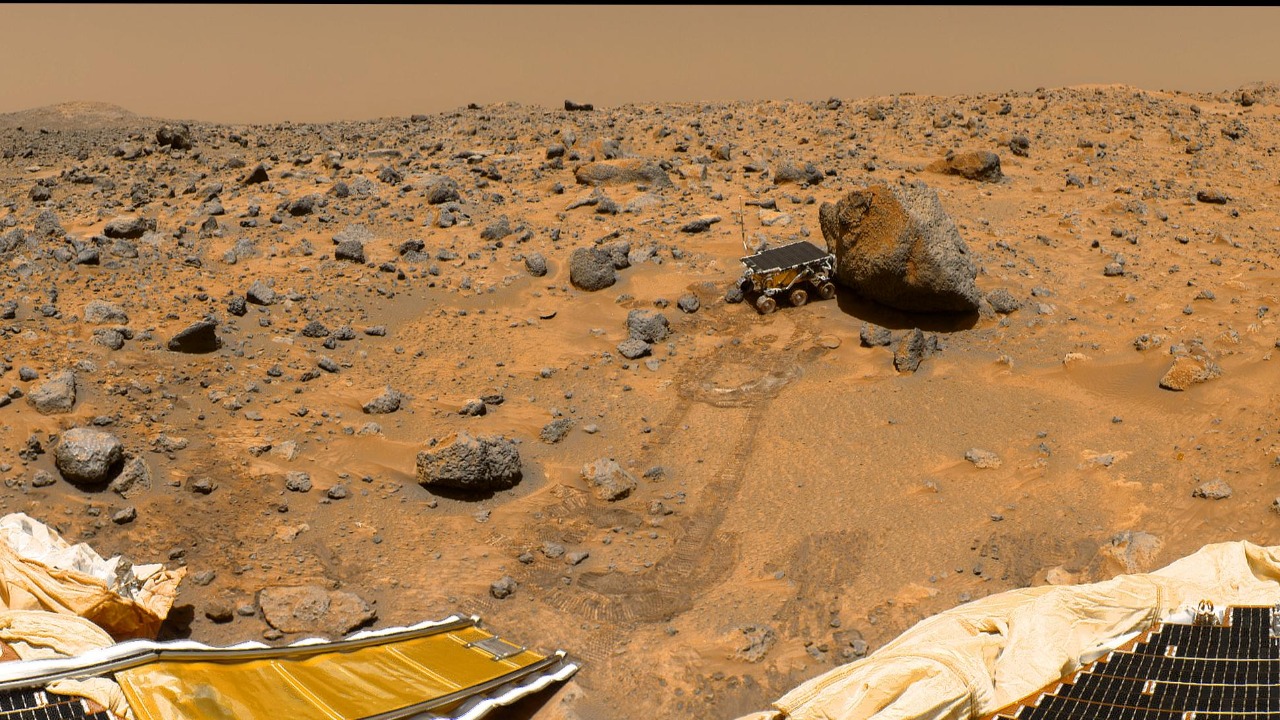
Recent studies have unveiled a fascinating phenomenon on Mars where blocks of dry ice burrow through dunes, reminiscent of the sandworms from the science fiction classic ‘Dune’. This process, driven by explosive sublimation, carves out gullies and explains the long-observed, puzzling patterns on the Martian surface. These blocks of CO₂ ice move like “worms” in the sand, creating canyons and eerie gullies, a movement that scientists have now attributed to this unique geological activity.
The Enigma of Mars’ Dune Gullies
For years, scientists have been puzzled by the recurring slope lineae and gully formations on Martian dunes. These features, which appear and shift dynamically, have long defied explanation through typical wind or water erosion processes. Observations have shown these gullies appearing and shifting in Mars’ polar and mid-latitude regions, suggesting an active geological process at work, rather than static features. The dynamic nature of these formations has been a subject of intrigue, as they do not align with the cold, dry conditions of the Martian environment, which challenge prior theories such as liquid water flows [Gadgets360].
Previous hypotheses that involved liquid water were largely dismissed due to Mars’ frigid climate, leaving the patterns unexplained until recent findings. These gullies, observed in high-resolution images, indicate an active process that reshapes the Martian landscape. The discovery of dry ice as a key agent in these formations provides a new understanding of Martian geology, highlighting the planet’s dynamic surface processes [ZME Science].
Dry Ice Blocks as Martian “Worms”
The process begins with slabs of dry ice, formed from seasonal CO₂ frost, detaching and sliding down the dunes. This movement is akin to the fictional sandworms in ‘Dune’, as these ice blocks burrow subsurface paths through the Martian sand. The worm-like motion of these blocks creates elongated channels, mimicking the burrowing behavior of the fictional creatures. This discovery not only explains the formation of these gullies but also provides insight into the active geological processes on Mars [Space.com].
High-resolution images from Mars’ winter-to-spring transition have captured the tracks left by these blocks on the dunes. These images provide compelling evidence of the dry ice blocks’ movement, supporting the theory that they play a significant role in shaping the Martian landscape. This movement is not just a surface phenomenon but involves the subsurface as well, contributing to the formation of canyons and other erosional features [Evidence Network].
Explosive Sublimation: The Driving Force
The driving force behind this process is the explosive sublimation of dry ice. As the CO₂ ice blocks move, trapped gas builds pressure within them, eventually leading to an explosion that propels the blocks forward. This rapid sublimation excavates gullies and creates the characteristic fan-shaped deposits at the ends of these formations. The explosion releases CO₂ gas, which lifts and carries sand, further contributing to the unique patterns observed on the Martian surface [Space Daily].
Lab simulations and data from Mars orbiters confirm that these explosive bursts occur in the planet’s thin atmosphere, enabling the ice to “swim” through the dunes. This process not only explains the formation of gullies but also highlights the role of dry ice in Martian geological activity. The implications of this discovery extend beyond understanding surface features, as it provides a new perspective on the planet’s active processes [Gadgets360].
Implications for Understanding Mars’ Geology
This discovery resolves long-standing debates over the active processes shaping Mars’ surface, confirming that dry ice is a key agent in forming these features without the presence of liquid water. The role of CO₂ ice in shaping the Martian landscape is significant, as it contributes to the formation of larger erosional landscapes through repeated burrowing. This insight into Martian geology not only enhances our understanding of the planet but also informs future exploration missions [Evidence Network].
Future observations from missions like the Mars Reconnaissance Orbiter will be crucial in tracking these events seasonally. By monitoring the movement of dry ice blocks and their impact on the Martian surface, scientists can gain a deeper understanding of the planet’s geological activity. This ongoing research will continue to shed light on the dynamic processes that shape Mars, offering new insights into its past and present [Space.com].